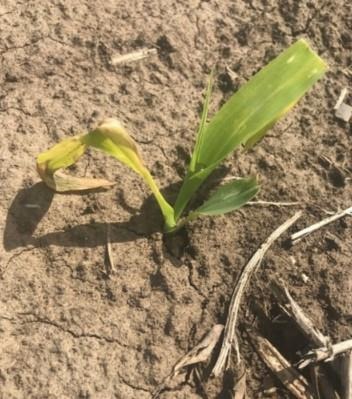
Figure 2. Corn plant lacking optimum growth in a surface-crusted heavy texture soil from Eastern Nebraska, 2020.
For soybean, if you suspect poor emergence due to soil crusting (or any other factor), take a stand count from several areas within your field at the VC growth stage (unifoliate leaves unrolled sufficiently, so the leaf edges are not touching). See the AgCrops Team YouTube channel for a stand count demonstration. Although a plant population of 100,000 plants/acre is ideal, we do not suggest replanting until the plant population drops to 50,000 plants/acre. Fields with crusting problems can look extremely poor, but the plant stand is adequate, and the field does not need to be replanted. At low plant populations, soybeans can compensate by increasing the number of branches. In general terms, soybean plants tend to be more/better compensative than corn.
For corn, depending on the planting date, the potential yield loss from a reduced stand may be less than expected. To assist in this process, the relationship between planting date, plants per acre at harvest, and crop yield for corn and other adjustments/conversions can be found in the AGF-502 Factsheet. For example, a field planted on May 9th or before and with a stand of 25,000 plants/acre at harvest can still achieve 92% or more of the yield obtained at the optimum planting date and population. Replanting does not guarantee an increase in yields; if replanting happens late, the result can be lower yields (even with higher stands).
Some alternatives for mitigating the effects of soil crusting, other states have recommended: 1) if not planted yet, planting a little deeper for better seed/soil contact and access to moisture (but deep planting has associated risks due to inhibiting growth and vigor, seed running out of energy, uneven stands); 2) reduced or no-till systems that have more residues in the soil surface; 3) rotary hoe in the crusted layer (if crop is germinated and still below ground, but damage to seedlings may occur); 4) a row crop cultivator can be used if the crop is tall enough (limited to crops grown in rows spaced at 30-inch). More information on soil crusting and potential solutions can be accessed here. Although these may be some options, we have not tested these practices in Ohio.
In any case, assessing how strong the crusted lawyer is, where the crop stands (e.g., planted, germinated, emerged), weather forecasts, and timing is critical to inform the decision process better. Before decisions are made, keep in mind that about 5 to 10 percent of planted seeds can fail to establish and that plants can and often compensate for some damage/losses and still be able to produce ‘normal’ yields.
Source : osu.edu